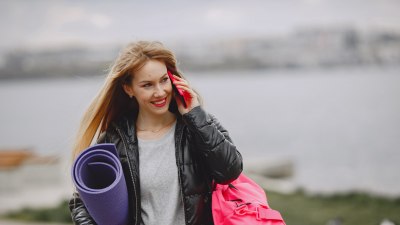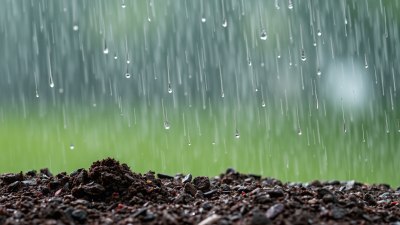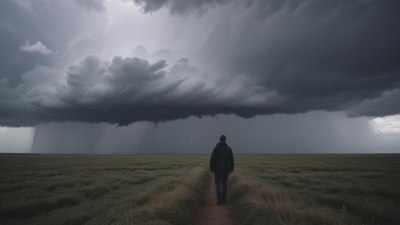How You Naturally Change Exercise Habits with Longer or Shorter Days
Discover how changing day length influences your exercise habits and tips to adapt effectively.

Image by prostooleh on Freepik
The correlation between the length of days and our exercise habits is often overlooked, yet it plays a significant role in how active we can be throughout the year. Throughout different seasons, as day lengths fluctuate, many individuals find their motivation, energy levels, and ultimately their exercise routines affected. Understanding this relationship can lead to more effective health and fitness strategies that fit the natural rhythms of our environment.
Seasonal changes typically bring about extended daylight in the summer and shorter daylight hours in the winter. During summertime, longer days encourage many to engage more in outdoor activities, which may help increase physical activity levels. In contrast, shorter days can lead to a drop in motivation, resulting in a significant decrease in exercise. However, recognizing these patterns allows for adjusting our routines accordingly.
Embracing Longer Days
Longer days often correlate with the summer months where sunlight lasts longer into the evening. This can lead to a more active lifestyle, offering opportunities for outdoor workouts like running, cycling, hiking, or participating in group sports. Longer daylight hours provide sufficient time for people to engage in fitness activities post-work, making it easier to maintain a consistent exercise routine.
Moreover, the longer exposure to daylight is not just advantageous for physical activities but is also beneficial for mental health. Sunlight is known to trigger the production of serotonin, a hormone that boosts mood and helps a person feel calm and focused. Consequently, when days are longer, many people may find they have more energy and motivation to pursue a workout schedule. It helps to analyze personal schedules and find the best times when one can squeeze in exercise, maximizing the benefits of natural daylight.
Setting New Goals
With longer days, setting fitness goals becomes a more enticing prospect. Individuals can create plans for activities that they find enjoyable and that can be sustained throughout the season. This can involve joining local leagues for soccer, basketball, or volleyball or participating in weekend hiking or cycling events. Additionally, longer days allow for group outdoor classes such as boot camps or yoga sessions in the park, thereby fostering community engagement and support in fitness pursuits, which can drive commitment and consistency.
Creating a flexible yet structured schedule is key. This involves setting specific goals—perhaps aiming to spend at least five days a week doing some form of exercise, gradually increasing the intensity or duration throughout the longer days. Keeping track of progress can provide motivation, showing the physical changes or endurance improvements that result from these efforts.
Addressing Shorter Days
On the flip side, shorter days during the fall and winter months can pose challenges for maintaining an active lifestyle. Many people experience a drop in motivation as daylight fades early, leading to a tendency to become more sedentary. Recognizing this can empower individuals to preemptively adjust their workout schedules, ensuring that exercise remains a priority irrespective of the weather or daylight conditions.
Finding ways to bring physical activity indoors becomes essential in the winter months. Engaging in workouts at home, joining a gym, or taking classes at local fitness centers can provide alternatives when daylight is limited. Moreover, having the right lighting in the workout area, whether at home or in a gym, can uplift the mood and help combat feelings of lethargy associated with the shorter days.
Maintaining a Routine
One effective strategy during shorter days is to maintain routines that have worked well in the past. Adopting a consistent exercise schedule, even when the sun sets early, can help maintain fitness levels. It's crucial to set fixed times for workouts, just as one would for any crucial appointment. Early morning workouts can be particularly effective, allowing individuals to seize the day's first light while also freeing up evening time for relaxation or other responsibilities.
In cold, darker months, it’s beneficial to find ways to motivate oneself, such as focusing on the goals set during the bright months and reminding oneself of the numerous benefits that consistent exercise brings. This can also involve varying workout types or routines for persistence—using technology like apps or wearables can track progress and provide the necessary encouragement to continue.
Behavioral Adjustments
Making behavioral adjustments becomes critically important in adapting to the changes in daylight. For instance, if you feel tired and unmotivated in the winter, it might help to allow yourself some time for a gradual transition into your workouts instead of a strict regimen. Often, starting with lighter activities and building up can create a sustainable habit during darker months.
Furthermore, pairing exercise with social interactions can significantly enhance motivation levels. Scheduling workout sessions with friends or participating in community fitness events fosters accountability while offering fun and increased motivation to stick with the routine.
User-Friendly Technology
Technology can serve as a crucial ally in fostering exercise habits irrespective of the season. Many fitness applications and platforms allow customization for home workouts, enabling users to tailor their exercise routines to fit their needs and preferences. You can access a plethora of workout routines, guided exercises, and personal trainers through virtual platforms, making it easier to work out no matter where you are.
Fitness tracking devices that monitor your physical activities can also encourage you to stay active. Analyzing data concerning physical activities allows users to appreciate their consistency and make adjustments based on progress. Celebrating small wins or achieving personal fitness milestones can further reinforce healthy habits throughout varying daylight conditions.
Mindfulness and Reflection
Incorporating mindfulness and reflection into your workout routines can be particularly beneficial during times of shorter days. This introspective approach allows individuals to connect with their bodies and recognize how they feel during different types of exercise. Understanding when energy levels dip during the day or what types of activities bring more pleasure can inform more nuanced workout routines, shaping an overall plan that caters to individual needs.
Engaging in mindfulness practices such as yoga or meditation alongside traditional workouts can improve mental resilience and enhance emotional well-being, especially when darker days increase feelings of stress or anxiety. Practicing mindfulness post-exercise can aid in recovery while reinforcing positive feelings about completion and achievement.
Ultimately, our exercise habits are deeply intertwined with the natural rhythms of the day. Learning to adapt to longer or shorter days not only fosters adherence to fitness routines but also enhances overall well-being. By understanding how these changes influence physical activity, individuals can tailor their routines in a way that hybridizes outdoor activities during extended daylight with convenient indoor workouts when days are short. Prioritize flexibility in routines, be mindful about motivations, utilize technology, and incorporate social aspects to create sustainable habits regardless of the time of year. Embracing the changes in day length can lead to a healthier and more active lifestyle, allowing you to thrive no matter the season.











